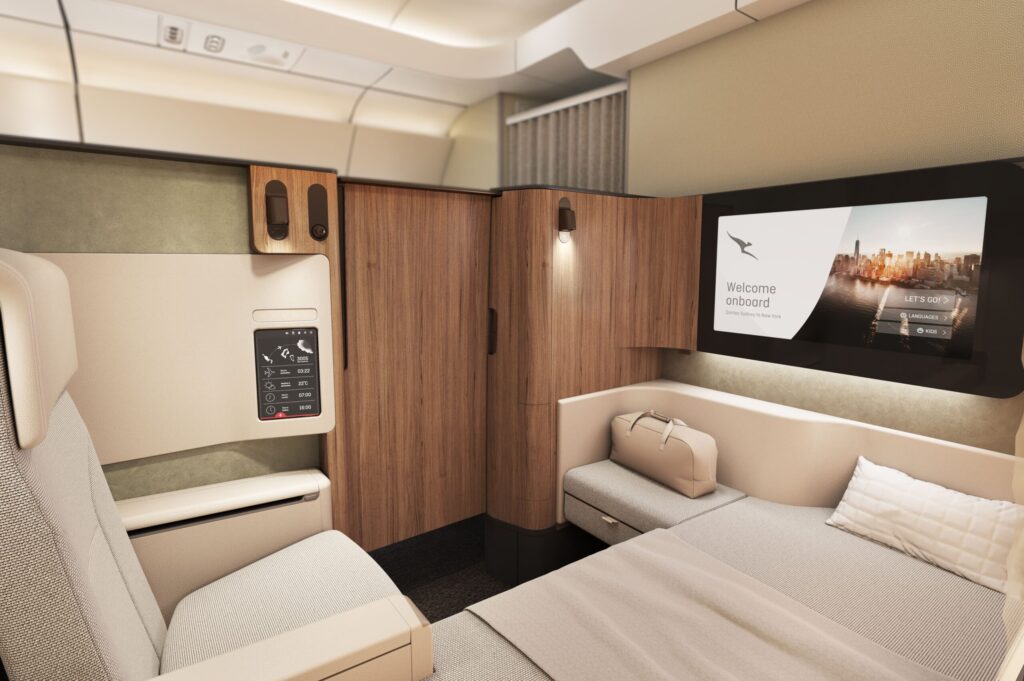Qantas has unveiled its revolutionary Project Sunrise, set to redefine the ultra long-haul flight experience with the introduction of the Airbus A350s cabin design. The Australian carrier has certainly gone the extra mile, not least by creating an onboard Wellbeing Zone, a first in the airline industry for flights between Sydney and New York or London.
Located between the premium economy and economy cabins, the dedicated Wellbeing Zone will provide passengers with an opportunity to stretch, enjoy a snack and spend some time out of their seats, improving their comfort throughout flights that could last up to 22 hours.
The area is designed with sculpted wall panels and integrated stretch handles, complemented by an on-screen guided exercise program, a hydration station and an assortment of refreshments.
“Reducing the number of seats onboard our A350 to 238 compared to the 300-plus seat layout of other carriers means we not only maximize aircraft performance across long distances, we give our passengers more space and comfort,” said Qantas Group CEO Alan Joyce.
The revised 40-seat premium economy and 140-seat economy cabins both offer the largest amount of personal space per seat on any Qantas aircraft. Additionally, they are equipped with ergonomic systems for legs and footrests and ample storage space for personal items.
The aircraft is designed to ensure a luxurious experience as well. It will feature six expansive First Suites, intended to mimic a boutique hotel room, including a two-meter flatbed, a dining table for two and a separate reclining chair. There will also be 52 Business Suites, equipped with sliding doors for enhanced privacy, lay-flat beds, spacious dining tables and custom lighting.
Each of the 238 seats across all four cabins will feature multiple fast USB charging ports, and every premium seat boasts integrated wireless charging too. It’s claimed that the aircraft will offer fast and free Wi-Fi, Bluetooth connectivity and 4K UHD touchscreen TVs.
The A350 is the result of an ongoing partnership with the University of Sydney’s Charles Perkins Centre, which has been studying solutions to reduce jet lag, improving sleep and overall well-being for passengers.
Tailored light exposure, eating and sleeping schedules, and specific menu ingredients such as chili and chocolate are among the strategies that have been integrated into the aircraft based on their findings.
“We have a multi-disciplinary team of more than ten researchers from medicine, science, and engineering backgrounds working together on this project. No airline has ever done this kind of research before,” said Professor Peter Cistulli from the Charles Perkins Centre.
The innovative Airbus A350s are expected to take to the skies in late 2025.
